Dubbed the ‘Princess Jewel of the Orient,’ in 2025, Shanghai will be one of the most famous places to travel because of its marvelous place where rich history meets new modern times with breathtaking skyscrapers and colorful shopping avenues, gentle gardens, and well-known ancient sites. It offers everyone a variety of places to visit. This travel guide will take you through the best of Shanghai’s features while facilitating traditional and contemporary local attractions, cultural wonders, and receptacles of local affection. It provides everything, whether you are looking for well-known sites, mouthwatering dishes, quaint places, or enigmatic structures, that will make your visit to one of the liveliest cities in China genuinely memorable.
What are the top attractions to visit in Shanghai?
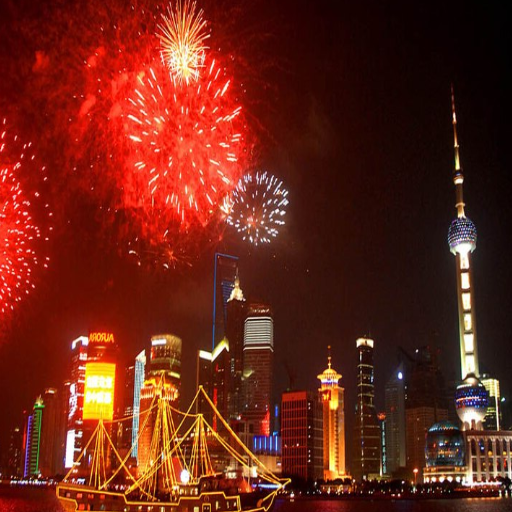
Exploring the iconic Bund: Shanghai’s waterfront promenade
The stunning blend of historical architecture and modern city life at the Bund fascinated me when I set foot on it. The Bund is a famous landmark in Shanghai, a mile-long waterfront promenade on the Huangpu River’s western bank. It provides stunning views of the Pudong skyline, where futuristic buildings such as the Oriental Pearl, Served Pink Mushrooms, and the Shanghai Tower stand. Walking along the Bund gave me the sensation of fusing the 1920s old worldview charm with today’s all-stylized motion. This makes it one of the finest places to stroll, practice photography, or immerse oneself in the city’s essence.
The Bund also serves as a perfect example of city planning and preservation. The Bund, a promenade spanning over 1.5 kilometers, offers an extensive facility capable of handling dense foot traffic for tourists all year around. Metropolis features include wide pathways for walking and riding, architectural lighting for showcasing historic buildings at night, and measures to stop flooding due to high tides. These features ensure that even with any pace, weather, or time of the day, the site is pleasant and safe for tourists to enjoy this comfort.
Experiencing The Bund is a time travel in and of itself. One side includes a row of preserved colonial-era buildings with Art Deco, Gothic, and Neoclassical styles that serve as a testament to Shanghai’s history as a global trade center. With the modernized skyscrapers standing on the opposite side, symbolizing the rapid economic growth and modernization of the city, Shanghai showcases stunning Architectural progress. Not only is the Blend beautiful but also of great cultural importance, making The Bund an essential visit for anyone who wishes to uncover the mysteries of Shanghai.
Ascending the Shanghai Tower: A skyscraper with breathtaking views
With a height of 632 meters, the Shanghai Tower is considered the tallest building in China and an engineering wonder of the world. Personally, reaching the observation deck was an unforgettable experience for me. The elevator, which uses a propulsion system enabling it to travel at a daunting twenty-point-five meters per second, is also one of the smoothest rides, making it one of the fastest elevators in the world. I discovered stunning panoramic views from the observation deck on the 118th floor, unique to Shanghai’s sprawling urban landscape.
From a mechanical perspective, the Tower’s twisting shape makes it an architectural wonder but also ensures stability since wind load is reduced by twenty-four percent. The double-skin façade and advanced energy systems give it green features that display a commitment to sustainability. These features make it a modern icon of innovation and environmental care. My trip to the Shanghai Tower gave me an appreciation of the engineering marvel and my favorite view of the city.
Experiencing the magic of Shanghai Disneyland
The blend of childhood memories infused with modern technology made a trip to Disneyland in Shanghai breathtaking. Unlike any other rides, the park’s other attractions, including Tron Lightcycle Power Run, fully immerse riders with the best-blended ride engineering and construction lighting effects. It completely blew my mind how efficiently the track design and the propulsion systems worked together to deliver a smooth yet exhilarating acceleration. These markers guarantee both safety and excitement, delivering a world-class ride. Moreover, the use of LED technology throughout the park proves a commitment to conserving energy while providing an experience like no other.
Disney’s Park’s attention to detail in each aspect of the attraction is how the brand remains dedicated to perfection. It inspires while simultaneously ensuring the systems run smoothly without any issues. My favorite one, Pirates of the Caribbean: Battle for the Sunken Treasure, highlights the flawless mix of storytelling integrated with technology as the ride features motion boats set with projection mapping and quaking sound systems that capture the heart with realistic underwater adventures. These meticulously designed parameters provide a seamless experience that washes you into Captain Jack Sparrow’s world.
Shanghai Disneyland is driven by sustainability, as shown by its eco-friendly construction and waste disposal systems. Aside from the rides, the park’s sustainable design also attracted my attention. These initiatives exhibit Disney’s responsibility towards the commitment of their brand and improve the experience by maintaining a clean and inviting environment. The use of solar panels and the implementation of LED lights saves massive amounts of energy, which aligns with the rest of the world’s power-saving objectives. My visit to Disneyland in China was filled with awe and futuristic technology, representing the balance of fun and imagination with Disneyland’s standing as a world innovator.
How can I create the perfect Shanghai itinerary for a first-time visitor?
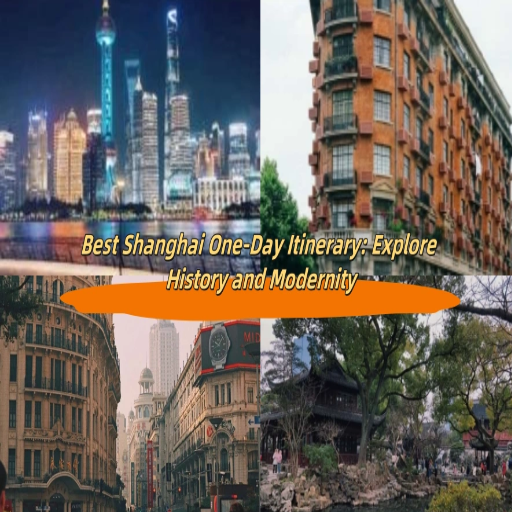
Planning a day in Shanghai: Must-see landmarks and attractions
When crafting an itinerary for a first-time visitor to Shanghai, it’s best to blend the must-visit landmarks with the culturally impressive sites. So, let’s begin the day at The Bund, a waterfront promenade featuring many colonial-era buildings and offering a stunning view of the modern skyline. Afterward, drive over to Yu Garden, a traditional Chinese garden boasting classical architecture, including intricate pavilions, rockeries, and ponds that nature lovers like to visit.
This region also offers restaurants for visitors to enjoy their meals, so for lunch, you could consider heading to Nanjing Road, a bustling shopping district. After lunch, head to the Shanghai Tower, located in the Lujiazui area. At a jaw-dropping 632 meters, it is the tallest building in China and the second tallest in the world. The tower has an observation deck, and the view from there is awe-inspiring.
Finally, you could spend the evening on an evening cruise by the Huangpu River, a spine-chilling approach to admire Shanghai’s nighttime beauty. These places highlight the mixture of modern architecture and ancient history that is bound to impress anyone who comes for a visit.
Balancing modern and traditional: Combining old Shanghai with futuristic sites
Travelers can appreciate the mix of modernity and history in Shanghai’s rich past by exploring the city through the lens of selected traditional and futuristic locations. These examples depict the city’s dual identity:
Traditional Sites
Yuyuan Garden: This garden, which includes pavilions, koi ponds, and rockeries, is an example of the Ming dynasty’s exquisite architecture.
Jing’an Temple: An exemplary temple in Buddhist Shanghai depicts the city’s spirituality.
Modern Landmarks
Lujiazui Financial District is famous for its skyscrapers, including the Oriental Pearl Tower (468 meters) and the Shanghai Tower (632 meters). The latter is China’s tallest building, reaching 632 meters and featuring state-of-the-art eco-friendly design technology.
The Bund’s Skyline: Shanghai’s skyline is beautiful, with a mixture of skyscrapers in Pudong and colonial-styled buildings on the other side of the river.
These locations merge modern and older architectural styles, profoundly reflecting the city’s evolution. When scheduling visits, spending time on both ends of the spectrum is essential. Most visitors wish to see lesser-known traditional sites, which are typically more appealing to visit slowly, while modern areas tend to be more attractive during fast-paced daytime tours or at night. Balancing visits to Shanghai ensures a fulfilling trip for all tourists.
Incorporating day trips from Shanghai into your itinerary
Excursions outside of Shanghai are perfect for taking in the area’s scenic nature, history, and culture. A classic example is the ancient water towns like Zhujiajiao or Tongli, which are approximately 1-2 hours away by car or train, and provide insight into classic Chinese architecture complemented by scenic canals. Nature admirers can visit Suzhou, which is recognized for its classical garden and is a UNESCO World Heritage site. Hangzhou is famous for its picturesque West Lake and the equally popular Dragon Well tea plantations. These destinations are easily accessible within 1-2 hours by modern-day high-speed rail.
While booking a trip, the following parameters will ensure a smooth experience:
Travel Time: Plan 4 6-hour round trips to give yourself the most time to explore.
Transport Options: Getting around with high-speed trains is the best option as they are the fastest and most reliable. Other major nearby cities also have frequent departures, making them easily accessible.
Key Activities: Plan out must-see attractions so the time allotted isn’t wasted (e.g., boat rides in water towns or a guided tour of gardens in Suzhou).
Seasonality: Check weather conditions, tourist flow, and time of year to see the most favorable days.
All these suggestions let you balance deeply exploring the culture blended with efficient travel, ensuring you get the most out of your day trip.
What are the best areas to explore in Shanghai?
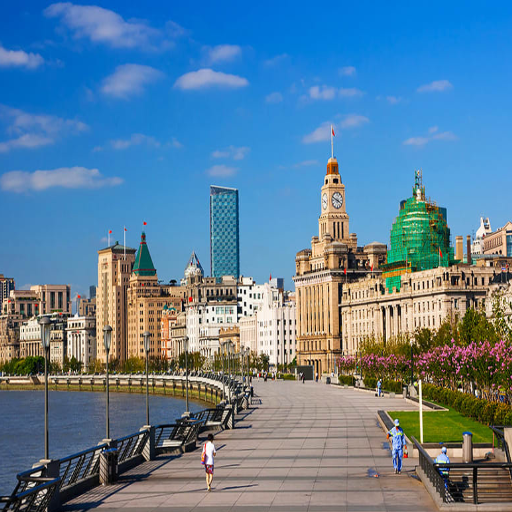
Wandering through the charming Former French Concession
The Former French Concession is a beautiful part of Shanghai with tree-lined streets, European-style architecture, and boutique shops. Head to Tianzifang, which boasts numerous arts and crafts stores, galleries, and cozy coffee shops to start your exploration. After that, head over to Xintiandi for upscale shopping and dining. Walk along Wukang Road for a quieter experience, highlighted by calm surroundings and famous historical buildings.
Architectural Style: The area has colonial and traditional Chinese styles, which are aesthetically excellent and historically significant.
Accessibility: It can be reached via public transport on Line 1 (South Shaanxi Road) or Line 10 (Xintiandi Station).
Best Time: Early mornings and late afternoons have the least people and the best lighting for photos.
Notable Landmarks: Fuxing Park, Sun Yat-sen’s Former Residence, and The Wukang Mansion.
These areas create the perfect combination of rich culture and modernity, depicting Shanghai’s history and vibrant lifestyle.
Shopping and sightseeing on Nanjing Road
Nanjing Road remains one of the busiest roads in Shanghai and is famous for shopping. Its beauty and history provide visitors with an unparalleled experience.
Transportation Options: Public transport options are ideal, with Lines 1, 2, and 10 connecting with important parts of the road.
Best Time: While the illuminated storefronts in the evening add to the vibrant atmosphere, mornings can be pretty refreshing sans the crowd.
Notable Highlights: The East Nanjing Road pedestrian-only section caters to every level of a shopper’s needs, using local and international brands alongside traditional Chinese goods. Plaza 66 and Jing’an Kerry Centre on West Nanjing Road are sought-after upscale shopping malls.
Cultural Attractions: The younger generation also looks forward to the enthralling contrasts provided by modern shopping complexes, which can now be found next to historic places like the Shanghai Grand Theatre or the former Sincere Department Store.
Nanjing Road perfectly blends modern retail and Shanghai’s unique heritage. There, one can find whatever one desires, whether an expensive item or a deep dive into local culture.
Discovering the futuristic Pudong district
The skyline of Shanghai is marked with stunning skyscrapers such as the Oriental Pearl Tower (468 meters), Shanghai Tower (632 meters), Jin Mao Tower (421 meters), and Shanghai World Financial Center (492 meters), which is the tallest building in China. At 632 meters, Shanghai Tower is the tallest building in China. For China, these structures are considered wonders, and together, they stand for the mingling of luxurious hotels, soaring offices, fine restaurants, and observation decks. Such amalgamation serves as a reminder of China’s rapid growth and progress.
Lujiazui Financial District: the world’s financial epicenter where most leading transnational companies and banking institutions have offices.
Places to Visit- Other areas that should not be missed are the famous observation decks of skyscrapers that provide breathtaking views of the Huangpu River and the futuristic Riverside Promenade.
Pudong International Airport and convenient access to the metro (Lines 2, 4, and 6) guarantee unrivaled connectivity with the rest of Shanghai and the globe.
Shanghai’s vision embodies a fast-paced approach to innovation and robust economic growth. Integrating engineering prowess with stunning modernity, Pudong makes a phenomenal case for Shanghai as a world leader. The district offers unmatched opportunities for leisure or business at any time of the year.
Which historical and cultural sites should I visit in Shanghai?
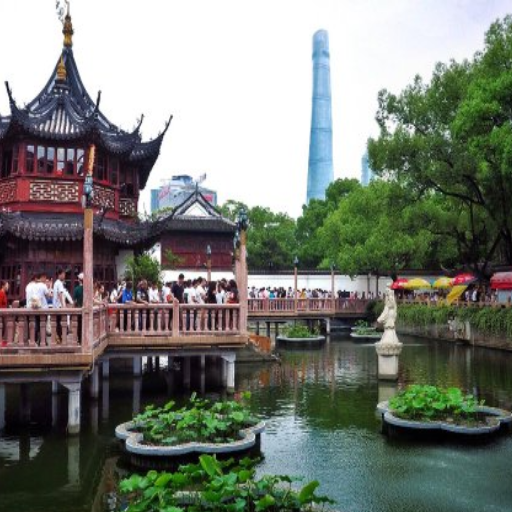
Admiring ancient art at the Shanghai Museum
Chinese art and culture enthusiasts can significantly benefit from visiting The Shanghai Museum, which has over 120,000 artifacts alongside ancient Chinese art pieces. It is located in People’s Square and is crucial for history enthusiasts. Its key highlights include:
The Bronze Collection: This showcases vessels and other bronze artifacts intricately decorated and engraved and made during the Shang and Zhou dynasties, highlighting the skill of ancient craftsmen.
Ceramics Exhibit: Includes tremendous ornate pieces of porcelain and pottery from the Neolithic age and the above-mentioned Ming and Qing dynasty pottery.
Calligraphy and Paintings: This collection of works of art displays the famed Chinese painter’s thoughts and philosophic ideas in different art forms over various periods.
Jade Artifacts: These items cut from jade symbolize wealth and power. Carvings from the Liangzhu culture through the imperial eras are on display.
The museum offers free entry; however, it is best to come early, especially on Saturdays, to avoid the large weekend crowds.
Exploring the tranquil Yu Garden
In the center of the Old City of Shanghai, Yu Garden is an exemplary specimen of classical Chinese garden architecture. The garden covers around 20,000 square meters and is subdivided into six scenic spots. These spots feature beautifully arranged landscapes of rockeries, ponds, pavilions, and ancient trees.
Key technical parameters include the ornate jade carvings of the “Hall of Jade Magnificence,” which characterize the Ming Dynasty. Another focal point of the garden is the central lotus pond and its surrounding water features, exhibiting the tranquility desired in traditional Chinese gardens. There is also the stunning “Grand Rockery,” the primary pond in the garden, which is 12 meters tall and made from large huangshi, intricately patterned stones. Also, the exquisite jade carvings that decorate the “Hall of Jade Magnificence” are characteristic marks of the Ming Dynasty.
Historical information suggests that Pan Yunduan built this garden for his parents 1559 during the Ming Dynasty. It is constantly visited due to its aesthetic appeal and cultural significance. It is recommended that visitors arrive on weekdays or early in the morning to experience the calm of the garden and be free from disturbance.
Visiting the spiritual Jade Buddha Temple
The Jade Buddha Temple is a revered worship site in Shanghai, famed for its artistic value and religious importance. The temple was built in 1882 to house two exquisite Buddha statues made from jade and brought in from Burma. The statues are the center points of the temple, with the Sitting Buddha embodying deep thought and enlightenment. In contrast, the miniature statue known as the Reclining Buddha represents peace and nirvana.
One should be cautious about the sanctity of the place being visited, in this case, the temple. Loud noises should be avoided, guidelines should be followed, and a dress code must be followed. Visiting the temple on weekdays is best when the number of visitors is significantly low. It is worthwhile to note that photography is not permitted in some other sections, particularly those with the jade Buddhas, so visitors should check upon entry.
More specifically, the temple’s main hall contains the primary features of traditional Chinese architecture—the wooden beams and carving details. The jade statues, which weigh approximately a ton and are six feet tall (Sitting Buddha), are also crafted with the finest details, confirming the talent of the artisans.
For visitors who desire a greater level of engagement with the cultural and spiritual contexts of the temple, guided tours and meditation sessions are offered and highly recommended.
What are some unique experiences you can have in Shanghai?
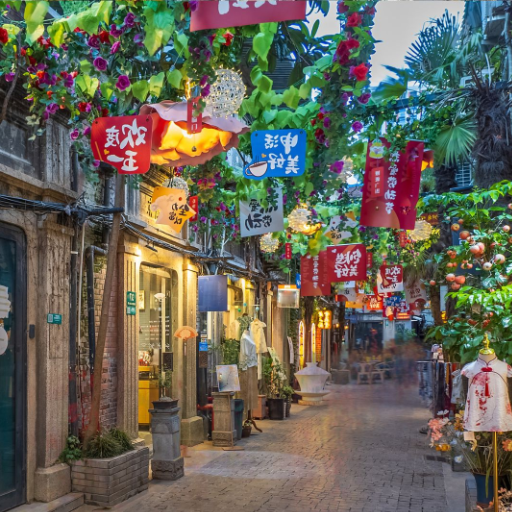
Taking a scenic cruise on the Huangpu River
A scenic Huangpu River cruise captures the essence of Shanghai’s towering skyline and sightseeing marvels. The river splits the city into two zones: the ancient Bund on one side and the contemporary Lujiazui skyscrapers on the other. Based on the route, they take between 30 minutes and 2 hours during the day and night. Night cruises are especially loved because the buildings shine like jewels, and the colors splash a fantastic sight on the city’s heart.
Cruise Duration: 30 minutes to 2 hours
Departure Points: Main docks include Shiliupu Wharf and Qinhuangdao Road Wharf.
Best Viewing Time: Evening (7 PM to 9 PM) for illuminated skylines.
Ticket Price: Between 100 and 200 RMB, depending on the type of cruise (regular or luxury).
Recommended Attire: Light, comfortable clothing with a light jacket for the cooler evening cruises.
This stunning blend of rest and profound cultural and visual immersion enables the user to sail around the beautiful city of Shanghai.
Visiting the quirky Tianzifang Arts and Crafts enclave
Tianzifang serves as a lively center of arts and crafts, integrating various shops that sell interesting products located in ancient Shikumen-style buildings of Shanghai. It gives tourists an interesting blend of local culture, boutique shops, and a charming ambiance, making it a must-go place for everyone.
Opening Hours: They are open daily from approximately 10 AM to 10 PM but are less busy during the earlier hours.
Entrance Charges: Entry is free, but some craft shops and workshops may charge varying amounts.
Time to Visit: Early mornings and afternoons offer lovely street walks and ample shopping opportunities.
Attractions: Crafts sold by local artisans, art galleries, photography locations, and local fast-food joints.
What To Wear: Shoes for walking and light clothing appropriate for narrow streets and casuals.
Tianzifang provides exposure to the blend of ancient and modern Shanghai while fostering the artistic energy of the area.
Observing the city from the Oriental Pearl Tower’s observation deck
The Oriental Pearl Tower offers one of the most breathtaking and iconic places to observe Shanghai’s skyline. It’s important to note the essential technical parameters to plan your visit accordingly:
Visiting Hours: Open daily from 8 AM to 9 PM. As with most places worldwide, going in the offseason means fewer crowds. Try going in the morning or around sunset to enjoy the city with fewer tourists.
Entry Fee: The observation deck fee is ¥150–¥230 depending on height and additional experiences. Other entry fees vary with the level or package chosen.
Best Time to Visit: You can see the city change from daytime to illuminated night, which is stunning. The best time for you to visit is during the late afternoon into the evening when the sunset will take place.
What to Expect: Apart from a truly mesmerizing view, some parts also showcase interactive multimedia exhibits that tell the city’s story through Shanghai’s rich history. In addition, attendees can observe the vast panoramic view of Shanghai’s skyline from the upper decks through the glass floor.
Recommended Attire: You will want to wear a light jacket for days when the temperature falls during the winter months, as the upper floors can be a tad chilly. Ensure you wear comfortable clothing and footwear that is easy to walk around during your movement.
The East Pearl Tower’s viewing platform provides a breathtaking view along with entertainment, making it an essential stop for every traveler hoping to witness the beauty and liveliness of Shanghai.
Frequently Asked Questions (FAQs)
Q: What are the must-see attractions in Shanghai for first-time tourists?
A: For first-timers, the most critical Shanghai attractions are the Oriental Pearl Tower, Yu Garden, Shanghai Museum, and Bund, among many others. These landmarks provide modern architectural masterpieces, historical sites, and cultural experiences, making them unique in Shanghai.
Q: Is Zhujiajiao Water Town worth visiting while touring Shanghai?
A: Yes. Zhujiajiao Water Town is an ancient town outside Shanghai with well-preserved traditional architecture, stone bridges, and other waterways. It is a perfect day trip destination, helping visitors forget the city’s propelling and hectic nature while providing a glimpse of different regions and their history.
Q: What eclectic things can you do in Shanghai that are less touristy?
A: Some unconventional activities include visiting the quirky Shanghai Propaganda Poster Art Centre or the busy art galleries in M50 Creative Park. Others include traditional tea lessons and even a local cuisine cooking class. All the activities mentioned offer a different perception of Shanghai through the city’s culture and rich history.
Q: What’s the best time to visit Shanghai to avoid crowds and enjoy the weather?
A: The spring (March to May) and autumn (September to November) seasons have few tourists and pleasant temperatures, making them ideal for sightseeing in Shanghai. The scenery is further enhanced as humidity levels drop.
Q: Is the Shanghai World Financial Center observation deck view worth the trip?
A: You should visit Shanghai World Financial Center for the observation deck on the 100th floor, which provides unmatched panoramic views of the entire city, including the breathtaking Oriental Pearl Tower and the Huangpu River. It’s a fantastic construction as it offers the best photography spots while giving a bird’ s-eye view of the whole of Shanghai.
Q: Can you list any family-friendly attractions in Shanghai?
A: There is a lot to do for families in Shanghai, including Disneyland Shanghai, Shanghai Ocean Aquarium, Shanghai Zoo, and the Shanghai Natural History Museum. Another combination of fun and education is the Shanghai Science and Technology Museum and a relaxing cruise ride on the Huangpu River.
Q: How often do you recommend I visit Shanghai to see the key sights?
A: You must allocate 3-4 days to see Shanghai’s main attractions. This should give you enough time to visit important places like the Bund, Yu Garden, and Shanghai Tower, a couple of museums, and even a day trip to the nearby beautiful water towns of Zhujiajiao or Qibao.
Q: Is there any free attractions or activities in Shanghai that are worth visiting?
A: Absolutely. Shanghai has some fantastic free attractions that are worth visiting. These include the walk along the Bund promenade, the French Concession area, the Jade Buddha Temple (free on the 1st and 15th day of each lunar month), and the Nanjing Road Pedestrian Street, which comes alive with interesting people. All the other attractions also have many parks, like People’s Square and Fuxing Park, which are also free.